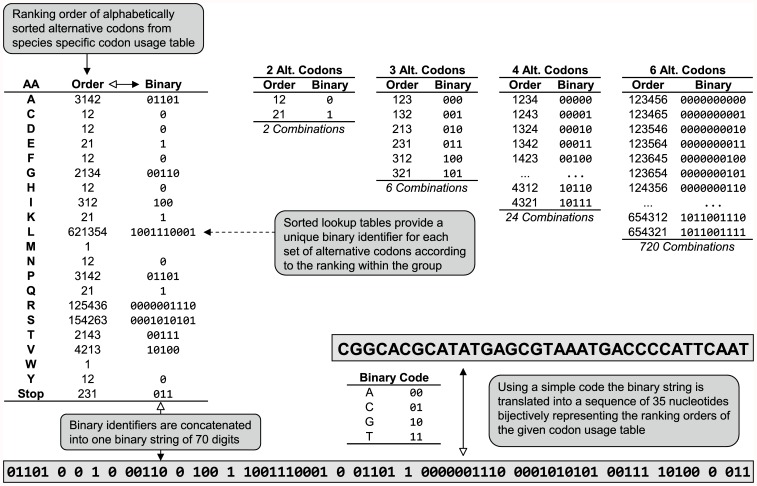Figure 3. Codon usage table attachment.
Procedure for storing the key to any possible codon usage table ranking order within a string of 35 nt (▴) and vice versa (Δ). In this example the sequential arrangement of the human codon usage is specified in the table columns “AA” and “Order”. For example, the most frequently used alanine codon in the human genome is GCC, followed by GCT, GCA and the least frequent GCG. Applying this sequential frequency arrangement to the alphabetically ordered codons results in GCA(3), GCC(1), GCG(4), GCT(2) or - in short - 3142. In total, there are 24 possible combinations of 4 alternative codons (#0 = 1234 … #23 = 4321) and the showcase order 3142 is at position #13 in this list. Thus, from the lookup table for four alternative codons (4 Alt. Codons), this order can be represented by the binary identifier 01101 ( = 13). When performed for each amino acid, a binary string of 70 digits defines the frequency arrangement of all 64 codons for that specific codon usage table, here listed for H. sapiens. A simple binary-to-nucleotide translation table (A = 00, C = 01, G = 10, T = 11) can then represent this binary string in a sequence of 35 nucleotides.

